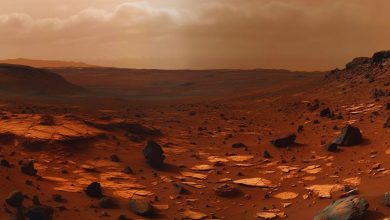NASA to study rock samples from Mars using machine learning algorithms | Technology News

The use cases of AI/ML seem endless as US space agency National Aeronautics and Space Administration (NASA) has now said that it is developing machine learning algorithms that can help analyse rocks and other samples from Mars.
In order to collect these samples and more, the European Space Agency (ESA) is working on landing its Rosalind Franklin rover on the surface of the red planet by 2028. One of the main objectives of the upcoming ExoMars mission led by the ESA is to determine if life ever existed on Mars.
How will it work?
When the rover touches down on Mars, it will have a mass spectrometer instrument called the Mars Organic Molecule Analyser (MOMA) onboard. After the rover has collected samples using a coring drill, the analyser will scan the objects and send the results back to Earth.
This is where the machine learning algorithm comes into play. The technology will be used to detect any organic compounds present in the samples which would serve proof that life existed on Mars.
Currently, Nasa researchers are training the algorithm by feeding it examples of substances that may be found on Mars and labelling what they are. This will help the algorithm identify patterns and make decisions or draw conclusions based on the data it analyses. Human researchers would not be able to detect patterns in the same way as machine learning algorithms are able to do so.
How is machine learning useful here?
When it comes to rover missions, scientists do not have ample amount of time to collect and analyse data from all the material present on the surface of planets like Mars. Hence, using machine learning algorithms in this way could help NASA researchers cut down on the time needed to conduct such complex scientific experiments.
“This machine learning algorithm can help us by quickly filtering the data and pointing out which data are likely to be the most interesting or important for us to examine,” Xiang “Shawn” Li, a mass spectrometry scientist in the Planetary Environments lab at NASA Goddard, said.
Story continues below this ad
“For example, if we measure a sample that shows signs of large, complex organic compounds mixed into particular minerals, we may want to do more analysis on that sample, or even recommend that the rover collect another sample with its coring drill,” Li said.




